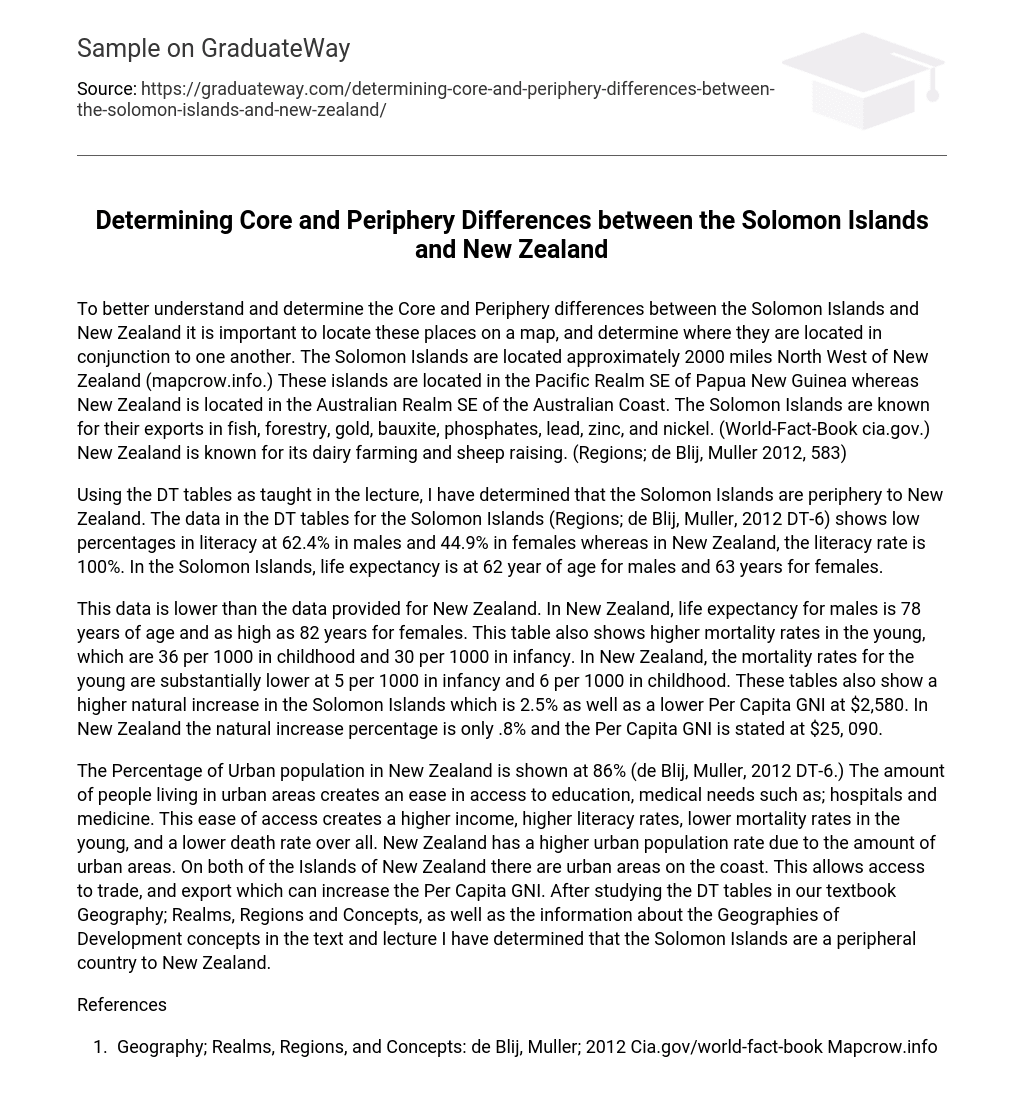To better understand and determine the Core and Periphery differences between the Solomon Islands and New Zealand it is important to locate these places on a map, and determine where they are located in conjunction to one another. The Solomon Islands are located approximately 2000 miles North West of New Zealand (mapcrow.info.) These islands are located in the Pacific Realm SE of Papua New Guinea whereas New Zealand is located in the Australian Realm SE of the Australian Coast. The Solomon Islands are known for their exports in fish, forestry, gold, bauxite, phosphates, lead, zinc, and nickel. (World-Fact-Book cia.gov.) New Zealand is known for its dairy farming and sheep raising. (Regions; de Blij, Muller 2012, 583)
Using the DT tables as taught in the lecture, I have determined that the Solomon Islands are periphery to New Zealand. The data in the DT tables for the Solomon Islands (Regions; de Blij, Muller, 2012 DT-6) shows low percentages in literacy at 62.4% in males and 44.9% in females whereas in New Zealand, the literacy rate is 100%. In the Solomon Islands, life expectancy is at 62 year of age for males and 63 years for females.
This data is lower than the data provided for New Zealand. In New Zealand, life expectancy for males is 78 years of age and as high as 82 years for females. This table also shows higher mortality rates in the young, which are 36 per 1000 in childhood and 30 per 1000 in infancy. In New Zealand, the mortality rates for the young are substantially lower at 5 per 1000 in infancy and 6 per 1000 in childhood. These tables also show a higher natural increase in the Solomon Islands which is 2.5% as well as a lower Per Capita GNI at $2,580. In New Zealand the natural increase percentage is only .8% and the Per Capita GNI is stated at $25, 090.
The Percentage of Urban population in New Zealand is shown at 86% (de Blij, Muller, 2012 DT-6.) The amount of people living in urban areas creates an ease in access to education, medical needs such as; hospitals and medicine. This ease of access creates a higher income, higher literacy rates, lower mortality rates in the young, and a lower death rate over all. New Zealand has a higher urban population rate due to the amount of urban areas. On both of the Islands of New Zealand there are urban areas on the coast. This allows access to trade, and export which can increase the Per Capita GNI. After studying the DT tables in our textbook Geography; Realms, Regions and Concepts, as well as the information about the Geographies of Development concepts in the text and lecture I have determined that the Solomon Islands are a peripheral country to New Zealand.
References
- Geography; Realms, Regions, and Concepts: de Blij, Muller; 2012 Cia.gov/world-fact-book Mapcrow.info





